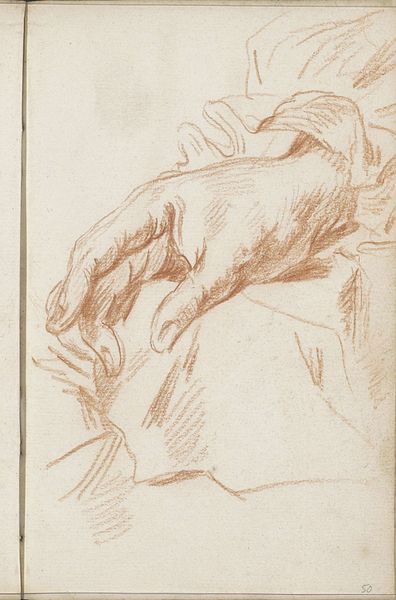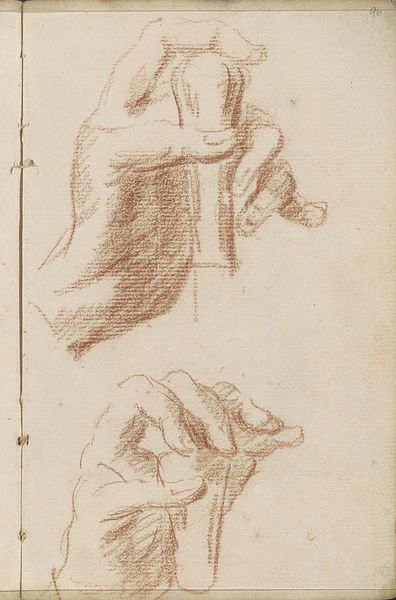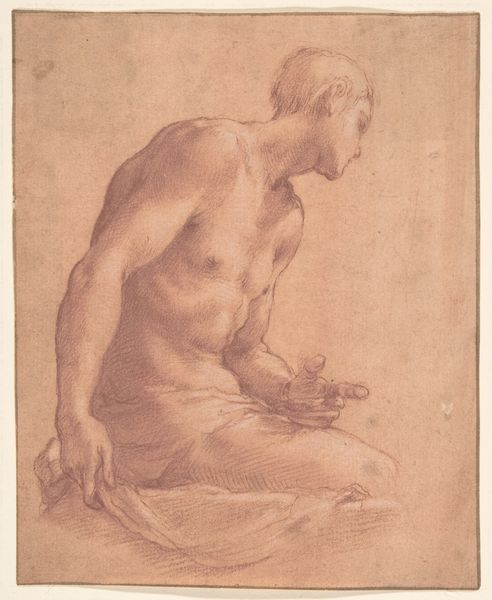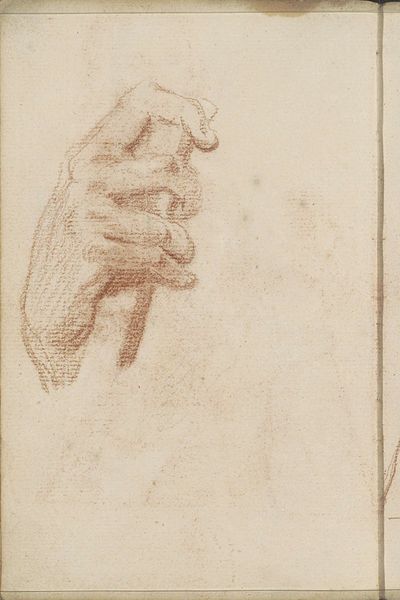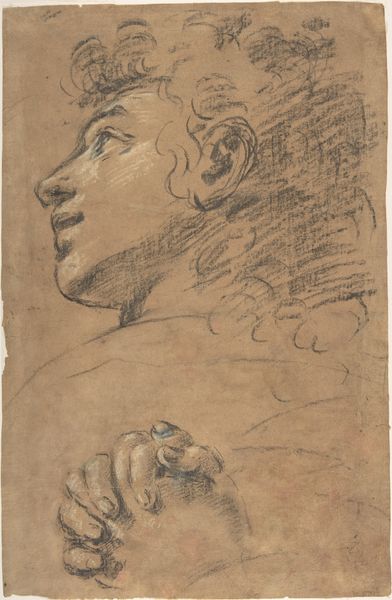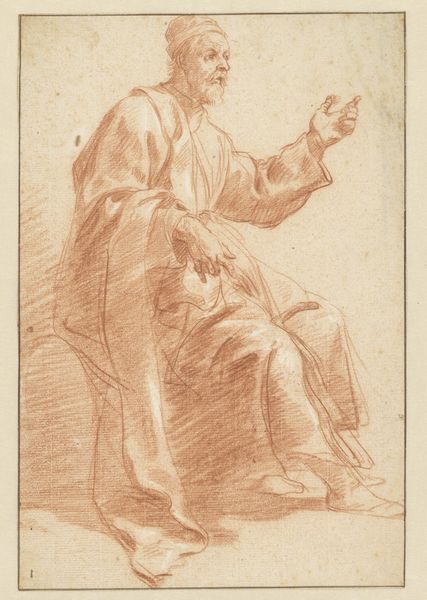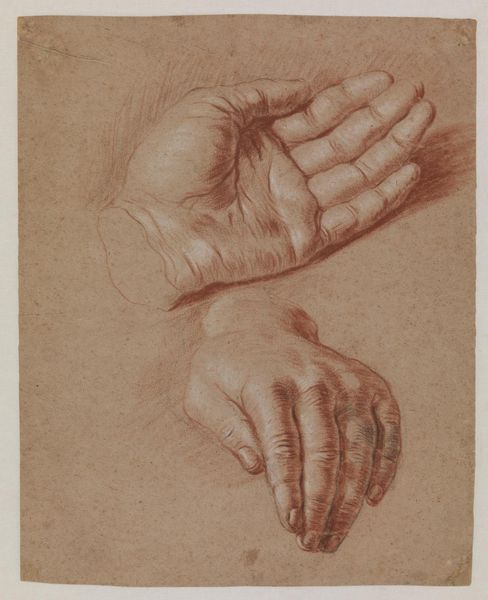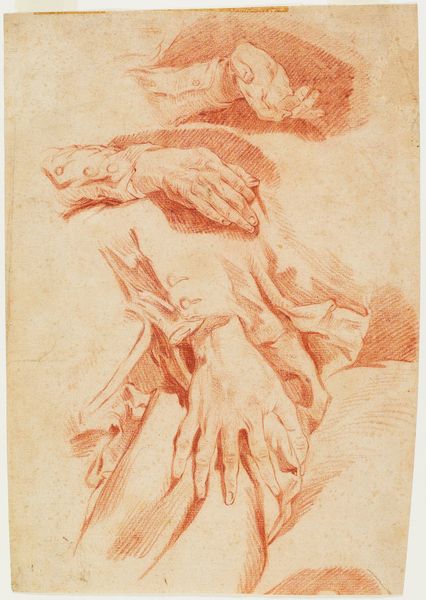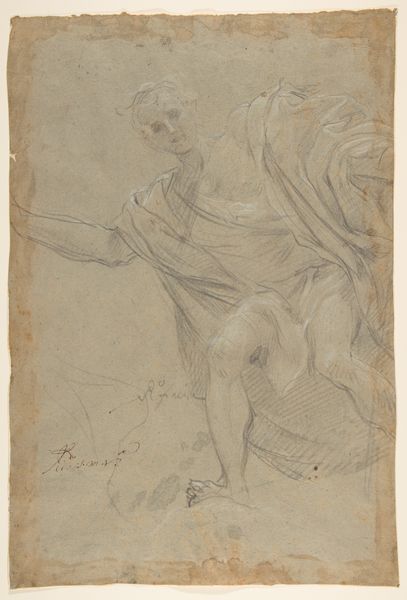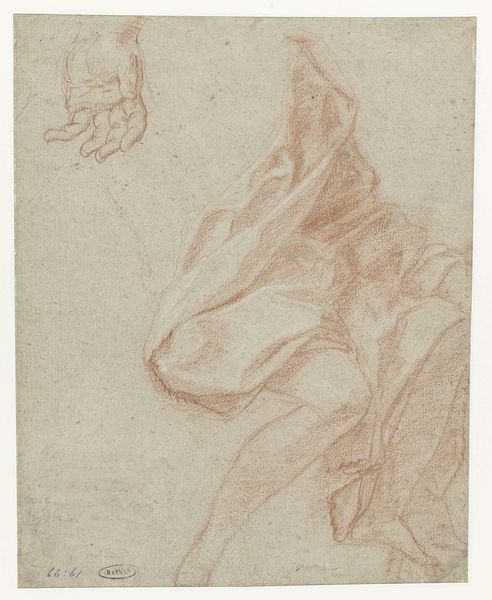
Studieblad met het hoofd van een oude vrouw en twee handen 1574 - 1651
0:00
0:00
drawing, paper, ink
#
portrait
#
drawing
#
mannerism
#
paper
#
ink
#
pencil drawing
#
portrait drawing
Dimensions: height 218 mm, width 149 mm
Copyright: Rijks Museum: Open Domain
Editor: Here we have Abraham Bloemaert’s "Study Sheet with the Head of an Old Woman and Two Hands," a drawing made with pen in brown ink on paper sometime between 1574 and 1651. The image is arresting – a close study of aging, almost like a Renaissance observation. What do you see when you look at this piece? Curator: I see an artist grappling with the social role of the aged. Bloemaert, working in a society that often marginalized older individuals, brings their likeness to the forefront. Drawings like these, circulated within artistic workshops, weren't just technical exercises. They shaped the visual language through which age was understood, even judged, by the public. Consider, who commissioned this and how was it displayed? Editor: That's interesting. So, the piece gains significance beyond a mere exercise in representation. Was there a particular visual language around representing older people at the time? Curator: Absolutely. The exaggerated wrinkles, the downturned mouth – were these meant to elicit empathy, or something else? The "Study Sheet" becomes a political document, subtly commenting on power, perception, and the place of the elderly within Dutch society. How do you interpret the inclusion of the hands, particularly one gripping a sheet? Editor: The hands seem to represent knowledge or skill. Perhaps an association with reading or writing – thus agency? Curator: Precisely. Bloemaert isn't simply documenting age. He's prompting viewers to consider the lived experience and social roles afforded, or denied, to older generations. Consider how different this image would be if the hands were absent or posed in a different way. Editor: I never thought about it that way, but seeing this study as part of a social dialogue, not just as a beautiful drawing, really shifts my perspective. Thank you. Curator: And thank you. It's vital that we, as viewers, remember that art is never created in a vacuum. Instead, it engages in complex conversations with the societies and individuals it both reflects and influences.
Comments
No comments
Be the first to comment and join the conversation on the ultimate creative platform.

